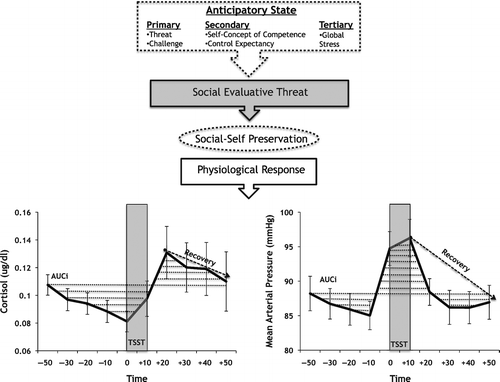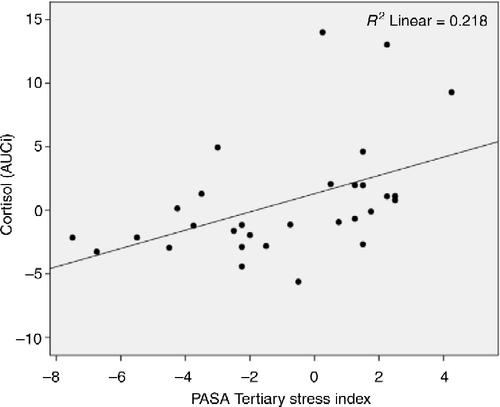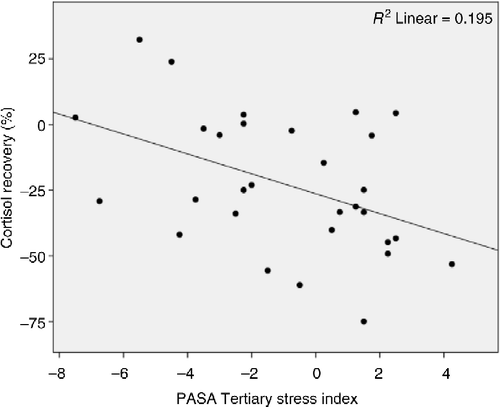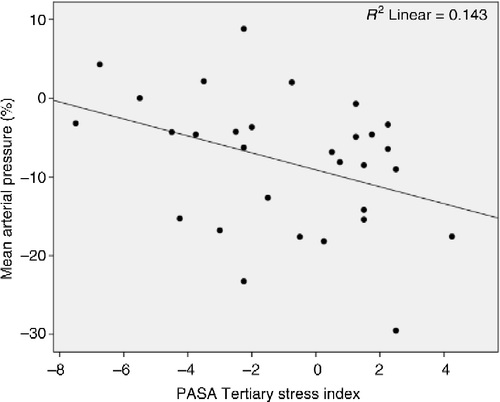Figures & data
Figure 1. Study timeline. Sampling time points (numbered boxes), pre- and post-stress exposure minutes (time above the timeline), and total minutes (time below timeline) are depicted throughout a 2-h afternoon session. Participants (a) rested for 40 min, (b) were given instructions to begin anticipating the TSST after 50 min at which time they completed the PASA scale, (c) were exposed to the TSST after 60 min, and then (d) recovered during 70–110 min until they were debriefed. The time points representing the recovery phase of salivary cortisol concentration and mean arterial pressure are demarcated at 70 and 80 min, respectively.

Figure 2. Schematic representing key study constructs illustrated using the mean ( ± SE bars) salivary cortisol and mean arterial pressure values obtained from our sample (N = 30). The PASA scale is here broken down into respective sub-scales representing anticipatory stress prior to TSST exposure. In theory, the TSST induces social-evaluative threat that activates social-self preservation motivations that modulate physiological responses. In our analyses, mean salivary cortisol concentration and mean arterial pressure dynamics throughout the testing session (solid black line) were transformed into stress reactivity and stress recovery measures. In our first regression analyses, we used the area under the curve with respect to increase (AUCi; the area indicated by dotted lines throughout the session) representing stress reactivity from baseline ( − 50 min). For the second analyses, multiple regressions used a recovery percent slope (dashed line indicates recovery) representing linear decreases post-TSST; the area under curve with respect to ground (AUCg) representing total systemic “output” immediately before the TSST onwards was used as a covariate in the prediction of cortisol and mean arterial pressure recovery.

Table I. Regression parameters with anticipatory stress PASA prediction of cortisol and mean arterial pressure reactivity AUCi in response to exposure to the TSST.
Figure 3. Regression scatterplot illustrating the significant association (p = 0.009) between anticipatory stress measured with the PASA scale and cortisol reactivity (AUCi) to exposure to the TSST.

Table II. Regression model parameters with anticipatory stress (PASA) in association with cortisol and mean arterial pressure recovery (percent change).

